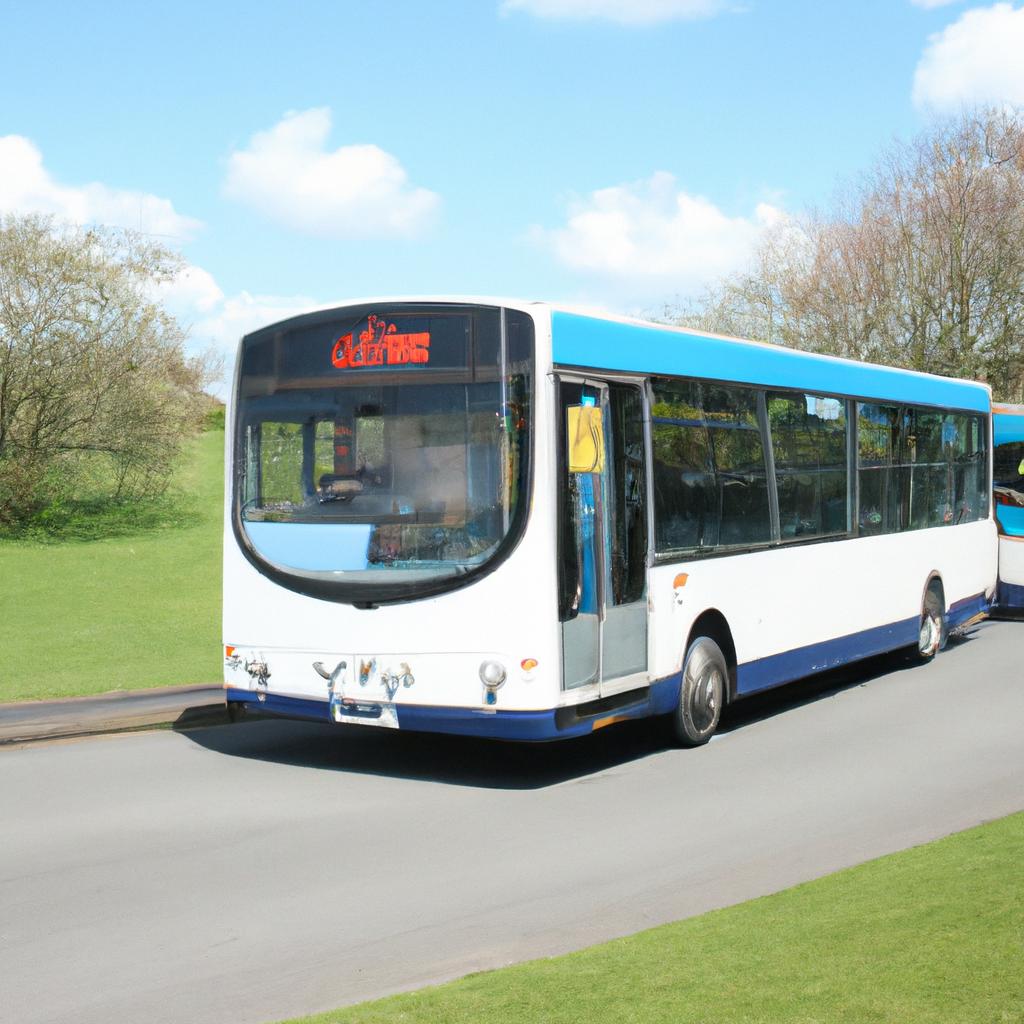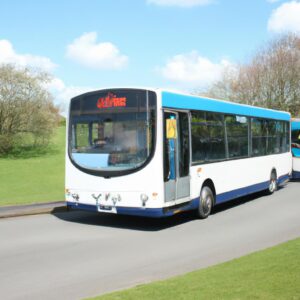Introduction
Choosing the right vehicle for a journey is a crucial step that can make a big difference in the quality of your trip. When it comes to safety and comfort, you want to make sure that you’ve selected a car that will keep you and your passengers secure and relaxed during the ride. There are many factors to consider when determining the right vehicle, from size and space to safety features and comfort amenities. Knowing what to look for can help you choose the best car for your journey, ensuring an enjoyable and safe experience.
Consider Size & Space
When planning a long journey, choosing the right size of car is important. It can make all the difference between a safe and comfortable ride or an uncomfortable one. That’s because long trips require more space for both passengers and luggage. The size of the car is the first factor to consider when selecting the right vehicle.
If you’re travelling with family or friends, consider how much legroom each person will need. You also want to make sure there’s enough headroom so everyone can sit comfortably. If you’re planning on bringing along extra luggage, make sure there’s enough space in the boot or back seat to store it.
Safety Features
Keeping you and your passengers safe on the road should be a top priority when selecting a vehicle for a long journey. Thankfully, modern cars come with a wide array of safety features to help keep you out of harm’s way. Here are some of the most commonly found safety features:
- Antilock brakes – Antilock brakes allow drivers to remain in control of their car while braking, even on slick or slippery surfaces. The braking system prevents the wheels from locking up, ensuring the driver can brake safely while maintaining control over the vehicle.
- Airbags – Airbags help protect passengers by cushioning them in the event of an accident. They deploy much faster than a seatbelt and can make a huge difference in reducing injuries.
- Stability control – Stability control is designed to help keep the car on its intended path even when the driver is steering aggressively or is distracted. This feature can help keep the car from skidding, sliding, or spinning out of control.
These are just a few of the many safety features available today, and there are sure to be more added in the future. Make sure to look into each of these features when selecting a vehicle – they could save you or your passengers’ lives one day.
Comfort Features
Traveling in a comfortable car is essential for having a great journey. Modern cars come with a variety of comfort features that make long-distance trips much easier. These features can help keep passengers cool, make driving more pleasant, and provide added convenience while en route.
One of the most important comfort features is air conditioning. This will help keep the car cool in hot weather and provide an escape from the heat. Some cars also come equipped with automatic climate control that can detect how warm or cool the car needs to be to provide optimal comfort.
Cruise control is another great feature of modern cars. This allows you to set a speed at which you want to drive, and the car will automatically adjust its speed to maintain it. This eliminates the need to constantly adjust your speed when driving on highways and can make trips go faster.
Finally, heated seats can make wintertime trips much more pleasant. These use electricity to heat up the seats of your car to provide warmth and comfort while driving.
Upgrading Amenities
Upgrading your car’s amenities doesn’t have to be daunting. With a range of after-market additions available, you can easily upgrade your vehicle and turn it into a more comfortable ride. Popular options include adding a surround sound system or a rearview camera to your car’s existing features.
Surround sound systems allow you to enjoy a cinematic-level sound experience, while the rearview camera helps with backing up or seeing what’s around you in a more clear and detailed way. Both of these additions may be relatively small, but they can go a long way in improving your journey experience.
Gas Mileage: How to Improve Your Efficiency on the Road
When considering a car for a long journey, it’s important to pay attention to the gas mileage. Getting good gas mileage ensures you will be able to get where you need to go without having to make too many stops for fuel. It also helps you save money in the long run on fuel costs. There are several techniques that can be used to increase the gas mileage of your car and improve your efficiency on the road.
- Restrict air conditioning use: Using the AC takes up extra energy, so limit its usage if possible. Keeping the windows open will also help with ventilation, so rolling them down can be helpful rather than relying totally on the AC.
- Avoid idling: Idling increases fuel consumption, so don’t sit with your engine turned on for longer than necessary. Try to plan your trips so that you can minimize the time spent with your engine running unnecessarily.
- Maintain your vehicle regularly: Regularly check the tire pressure, engine oil levels, and other fluid levels. This helps keep your vehicle running optimally and prevents any fuel wastage.
- Drive smoothly: Driving aggressively accelerates fuel consumption. Quick accelerations and sudden braking can significantly reduce the fuel economy of your car. Drive at a steady pace and avoid heavy acceleration or harsh braking.
By following these tips, you will be able to ensure your car is running as efficiently as possible. Paying attention to gas mileage can not only save you money but also help the environment by reducing carbon emissions. When choosing a car for a journey, make sure it has good gas mileage to get the most out of your trip!
Price & Value: Finding What Works for You
Purchasing a vehicle is an important decision. Everyone has a unique budget and needs to consider different ways to measure value. Knowing what features you will need and what you can do without can save you money and get the most bang for your buck.
Let’s look at two key aspects to consider when looking for the best value in a new car purchase: features and cost.
- Features: Consider what features are important and prioritize them according to personal preference but also keep in mind the costs associated with each feature. For example, if you prefer a sunroof but fuel efficiency is more important to you, then it may be better to forego the sunroof and get a car that has better fuel economy.
- Cost: Another factor to consider when searching for value is the overall cost of the car. Look at the sticker price, taxes, fees, and other associated costs such as those for extended warranties or dealer add-ons. Doing your research and comparing cars across different brands can help you get the best deal.
With these things in mind, your car purchase can become a fun and rewarding experience.
Insurance
When it comes to insuring your vehicle for a long journey, it is important to know the difference between liability, comprehensive, and collision coverage. Liability insurance covers costs associated with injuries and damages caused by you or other drivers. Comprehensive coverage pays for damage to stolen vehicles and damage caused to your vehicle from acts of nature. Collision coverage pays for damage to your vehicle after being involved in an accident. By understanding these three coverage types, you will be better equipped to select the best insurance plan for your journey.
The Benefits of Buying Used Cars
Buying a used car can be a great option for drivers looking to save money and still get quality. With the right research and care, a used car can offer the same features as a brand-new vehicle at a fraction of the cost. Not only can used cars be more affordable but they can also come with more features than if you buy new.
When it comes to buying used, there are several perks to consider:
- Cost savings: The biggest draw of purchasing a used car is its lower price. Car buyers who want a vehicle without spending a lot may find used cars to be a much more appealing option than buying new.
- Features: Many used cars come with features that would be expensive on a new vehicle. While buying used means potentially sacrificing on warranty options, it can often provide more features or a higher trim level than would be possible if the car were new.
- Reliability: While it’s important to inspect any used car before purchase, many are just as reliable and safe as their new counterparts. With some research and an understanding of how the vehicle was treated by previous owners, used cars can be a great long-term investment.
It’s important to remember that even though buying a used car has significant benefits, shoppers should still be careful throughout the process. Inspecting the vehicle ahead of time and researching the seller are both important steps in ensuring that you don’t end up with a lemon.
Financing & Leasing Options
When it comes to buying the right car for a comfortable and safe journey, there are various financing and leasing options available. From low-interest loans to manufacturer-backed leases, understanding the differences between these options is important in order to make the best choice.
Low interest loans can provide more flexibility since you will ultimately own the car; however, higher monthly payments may be associated with this option. On the other hand, leasing a car may be preferable if you don’t want the long-term commitment and responsibility of owning a car. Manufacturer-backed leases also often come with additional warranties to provide further peace of mind.
Dealer Experiences
When you are looking to buy a car, it is important to understand what to expect from the dealership. Many buyers are intimidated, so they must be prepared for the process and know how to get the best deal. There are several common experiences when dealing with dealerships, such as haggling over price and understanding fees.
Haggling over price is a common practice when buying a car. Dealerships have a set price for each vehicle, but they may also offer discounts as an incentive. Buyers can negotiate for a lower price or better finance terms by discussing different options with the salesperson. It is also important to be aware of extra fees that may be added to the purchase price, such as taxes, registration, and dealer fees.
While the process of buying a car may seem overwhelming, having a good understanding of what to expect from a dealership can make the experience much smoother. Being well-informed and having a clear direction will help buyers feel more confident when making a big decision.
Conclusion
When selecting the right vehicle for a comfortable and safe journey, it is important to consider size and space for passengers and luggage, safety features, comfort features, and potential upgrades. Make sure you assess the gas mileage of the vehicle, and research financing and insurance options that fit into your budget. Additionally, weigh your options when considering buying used, and understand the common practices when visiting a car dealership. With all of these factors in mind, you’ll be ready to embark on your journey with the perfect car.
comments: 0

